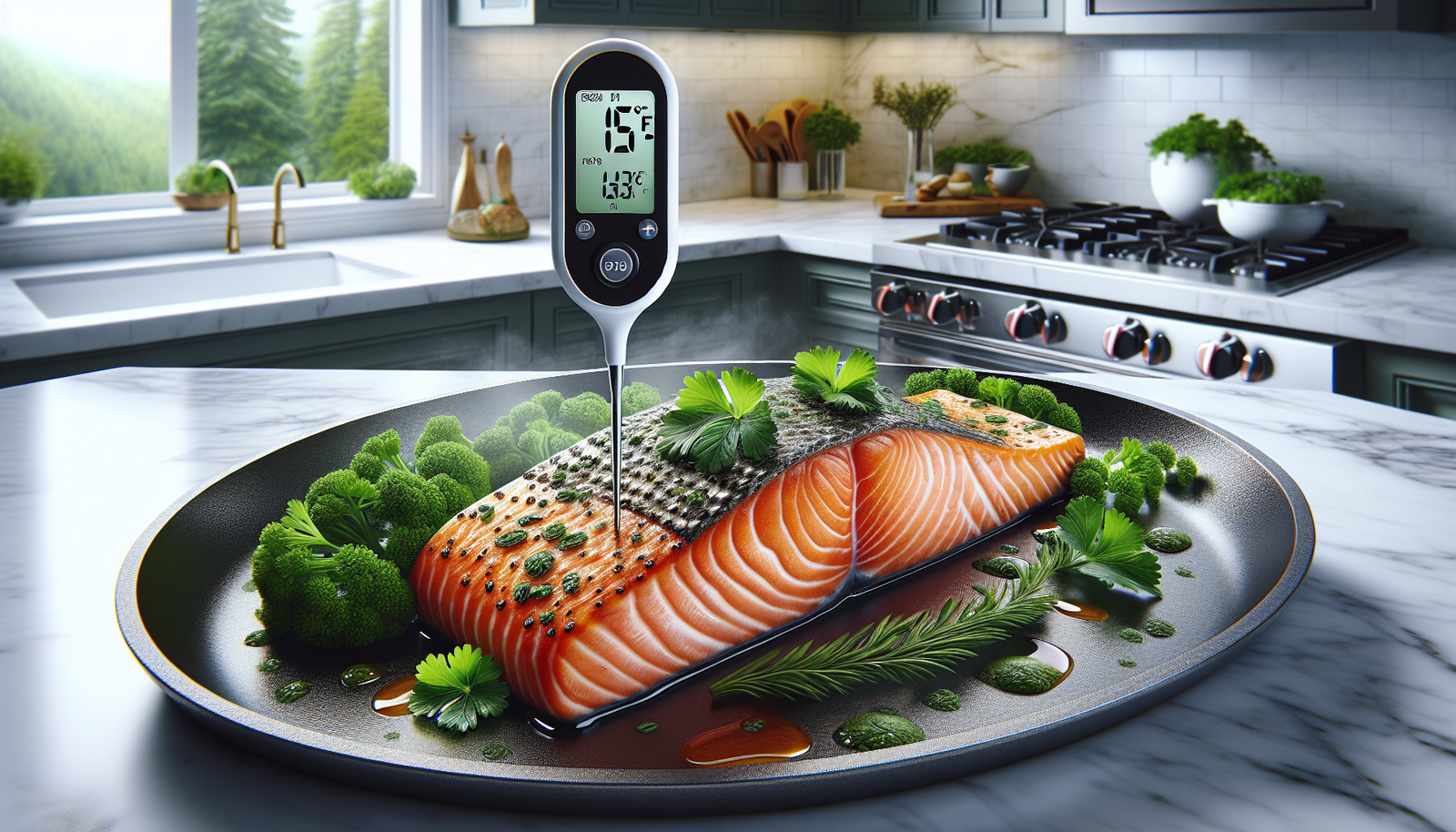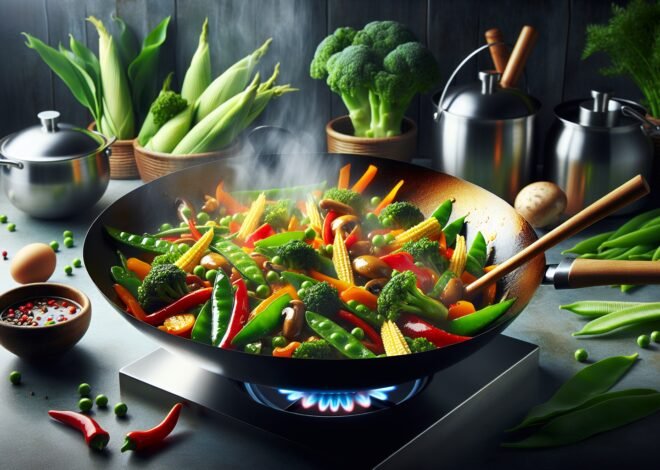
The Importance of Cooking Fish to the Right Internal Temperature
Fish internal temperature is crucial for both flavor and food safety. Cooking fish to the right internal temperature ensures that harmful bacteria are eliminated, reducing the risk of foodborne illnesses, while maintaining its delicate texture and flavor. Many people unknowingly undercook or overcook fish, which can lead to health risks or an unsatisfactory culinary experience. This post will delve into the recommended internal temperature guidelines for different types of fish, offer tips on how to accurately measure it, and highlight the benefits of adhering to these standards. Stick around to ensure your next seafood dish is both safe and delicious.
Understanding the Ideal Safe Internal Temperature for Cooking Fish
Cooking fish to the right internal temperature is crucial for both safety and flavor. Fish, unlike other proteins, has a delicate texture that requires precision. Cooking it to perfection ensures that it is not only safe to eat but also retains its natural flavor and nutrients. Here, we delve into the specifics of why fish needs precise cooking, the common pitfalls to avoid, and how to accurately measure its internal temperature.
Why Fish Requires Precise Cooking Temperatures
Fish is unique compared to other meats due to its low collagen content. This means it cooks faster and can become dry or overcooked quickly. The ideal internal temperature for cooking fish is around 145°F (63°C). At this temperature, fish flakes easily and maintains its moisture. Cooking fish to this exact temperature ensures that harmful bacteria are eliminated, while the delicate proteins are preserved for the best texture and taste.
Cooking fish at precise temperatures also prevents the loss of essential omega-3 fatty acids. These beneficial fats are susceptible to high heat and can degrade if the fish is overcooked. Maintaining the right cooking temperature ensures these nutrients remain intact, supporting a healthy diet.
Common Mistakes in Cooking Fish and How to Avoid Them
Many home cooks make mistakes when preparing fish. Overcooking is the most common issue, resulting in dry and flavorless fish. To avoid this, it’s important to monitor the cooking process closely. Using a meat thermometer is an effective way to ensure the fish reaches the perfect internal temperature without exceeding it.
Another mistake is failing to properly thaw frozen fish before cooking. Cooking frozen fish can result in uneven cooking, with the outside becoming overcooked while the inside remains raw. To avoid this, allow frozen fish to thaw in the refrigerator overnight or under cold running water.
Using the wrong cooking method or temperature can also impact the quality of the fish. High heat cooking methods can cause fish to dry out quickly. Opt for gentle cooking techniques, like baking or poaching, to retain moisture. Additionally, ensure the cooking surface is preheated to prevent the fish from sticking and breaking apart.
Safety Tips for Measuring Fish Internal Temperature Accurately
Accurately measuring the internal temperature of fish is key to ensuring it is safely cooked. Here are some tips for getting it right:
- Use a reliable food thermometer: Digital instant-read thermometers are ideal for quick and accurate readings.
- Insert the thermometer in the thickest part of the fish: This ensures you’re checking the area that takes the longest to cook.
- Avoid touching bones with the thermometer: This can give a false reading, as bones conduct heat differently than flesh.
- Check the temperature frequently: Start checking a few minutes before the recommended cooking time ends.
For even more accuracy, consider using a thermometer with a probe that can remain in the fish while it cooks. This allows for continuous monitoring and reduces the risk of overcooking.
Health Benefits of Cooking Fish to the Correct Internal Temperature
Cooking fish correctly not only enhances its flavor but also maximizes its health benefits. Achieving the right internal temperature preserves essential nutrients and protects against foodborne illnesses. Let’s explore how proper cooking techniques contribute to your well-being.
Retaining Nutrients by Cooking Fish Properly
Fish is a powerhouse of nutrients, rich in vitamins, minerals, and omega-3 fatty acids. These nutrients are sensitive to heat and can be lost if the fish is overcooked. Cooking fish to the correct internal temperature ensures these vital elements are retained, supporting heart health, brain function, and overall well-being.
Proper cooking methods, such as steaming or baking, help preserve these nutrients. These methods use gentle heat and moisture, ensuring the fish remains tender and nutrient-dense. When you cook fish correctly, you not only enjoy a delicious meal but also reap the full nutritional benefits it offers.
Preventing Foodborne Illnesses Through Proper Fish Cooking
Food safety is a top priority when cooking fish. Undercooked or improperly handled fish can harbor harmful bacteria and parasites, such as Salmonella and Anisakis. Cooking fish to the recommended internal temperature of 145°F (63°C) kills these pathogens, making it safe to consume.
In addition to cooking to the correct temperature, proper handling and storage are crucial. Keep fish refrigerated at 40°F (4°C) or below and consume it within two days of purchase. If freezing, ensure the fish is frozen at 0°F (-18°C) to prevent bacterial growth. Safe preparation practices, coupled with precise cooking, are essential for preventing foodborne illnesses.
How Proper Cooking Methods Enhance Fish Flavor
Cooking fish to the correct internal temperature not only ensures safety but also enhances its natural flavor. Fish has a delicate flavor profile that can be easily overshadowed by improper cooking techniques. Cooking it just right brings out its natural sweetness and subtle briny notes.
Gentle cooking methods like poaching, baking, or grilling help maintain the fish’s flavor. These methods allow for even heat distribution, preserving the moisture and preventing the fish from becoming tough or dry. When fish is cooked to perfection, it absorbs the flavors of any seasoning or marinade, providing a delectable dining experience.
Best Techniques for Cooking Fish to the Recommended Temperature
Mastering the art of cooking fish requires an understanding of different cooking techniques. Each method offers unique benefits and results in perfectly cooked fish when done correctly. Let’s explore some of the best techniques for achieving the recommended internal temperature.
Mastering Grilling Techniques for Fish
Grilling fish imparts a smoky flavor and beautiful grill marks. However, it requires careful attention to prevent overcooking. Start with a clean, well-oiled grill to prevent sticking. Preheat the grill to medium-high heat, ensuring even cooking.
Place the fish skin-side down on the grill. Cook for 3-5 minutes per side, depending on thickness, until it reaches an internal temperature of 145°F (63°C). Use a fish spatula to carefully flip the fish and ensure it remains intact. Grilling fish with the skin on helps protect the flesh from direct heat and adds flavor and texture.
Baking Fish to Achieve Appropriate Internal Temperature
Baking is a foolproof method for cooking fish evenly. Preheat the oven to 375°F (190°C). Place the fish in a baking dish, seasoned to your liking. Cover with foil to retain moisture or leave uncovered for a crispy finish.
Bake for 15-20 minutes, checking the internal temperature in the thickest part. Baking allows for precise control over the cooking environment, ensuring the fish reaches the ideal internal temperature without drying out. This method works well for thicker cuts, like salmon or cod.
Pan-Searing Fish While Maintaining Ideal Cooked Temperature
Pan-searing is perfect for achieving a crisp exterior while keeping the inside moist. Use a heavy skillet, such as cast iron, preheated over medium-high heat. Add a small amount of oil to the pan and heat until shimmering.
Place the fish fillets in the skillet, skin-side down. Cook for 4-5 minutes without moving it to develop a golden crust. Flip the fish carefully and continue cooking until the internal temperature reaches 145°F (63°C). Pan-searing is ideal for thinner fillets like trout or sole, providing a quick and flavorful result.
Choosing the right technique ensures fish is cooked to perfection, enhancing its natural flavor and texture. Whether grilling, baking, or pan-searing, understanding each method’s nuances leads to delicious and safe fish dishes.
Conclusion
The internal temperature of cooked fish should reach 145°F (63°C) to ensure safety and optimal texture. Using a food thermometer is the most reliable method to check the internal temperature. Fish should appear opaque and easily flake with a fork when it’s properly cooked. Undercooked fish can pose health risks, including foodborne illnesses. Different cooking methods may require adjustments to cooking times to reach the proper temperature.
FAQ
What is the safe internal temperature for cooked fish?
Fish should reach an internal temperature of 145°F (63°C) to be considered safe for consumption. This ensures that harmful bacteria and parasites are eliminated.
How can I check the internal temperature of fish without a thermometer?
Without a thermometer, check if the fish flakes easily with a fork. The flesh should be opaque and separate effortlessly.
Why is monitoring the internal temperature of fish important?
Monitoring ensures the fish is cooked thoroughly, reducing the risk of foodborne illnesses. It also helps maintain the fish’s optimal taste and texture.
What tools are recommended for measuring fish internal temperature?
A digital food thermometer is ideal for accurately measuring the internal temperature. Instant-read thermometers are also a reliable choice.
How does the internal temperature affect the taste and texture of fish?
Proper internal temperature ensures the fish remains moist and flavorful. Overcooked fish becomes dry and rubbery, ruining its natural taste and texture.
What are the signs that fish has reached the correct internal temperature?
When fully cooked, fish appears opaque and flakes easily. Its internal temperature will be at least 145°F (63°C).











